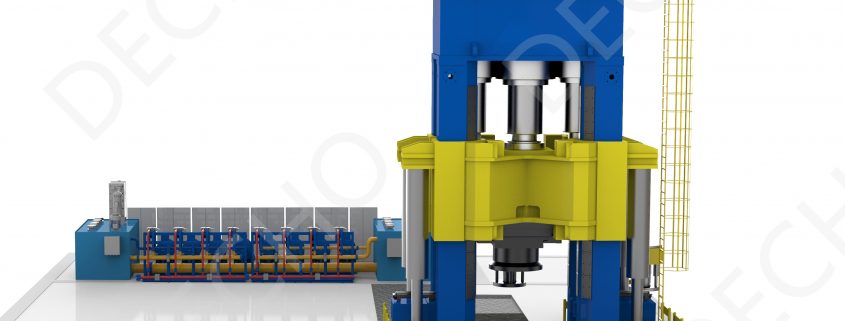Advantages and disadvantages of hydraulic press
Advantages and disadvantages of hydraulic press
(1) Advantages
For the hollow structure with variable cross-section, the traditional manufacturing process is stamping two half pieces first, and then welding them as a whole, while hydroforming can form the hollow structure with variable cross-section at one time. Compared with stamping and welding process, hydroforming technology has the following advantages
1. Reduce quality and save materials. For typical parts such as engine bracket and radiator bracket, hydroforming parts are 20% – 40% less than stamping parts; For hollow stepped shaft parts, the weight can be reduced by 40% ~ 50%.
2. Reduce the number of parts and mold, reduce mold costs. Hydroforming parts usually need only one set of dies, while stamping parts mostly need multiple sets of dies. The number of hydroforming engine bracket parts is reduced from 6 to 1, and the number of radiator bracket parts is reduced from 17 to 10.
3. It can reduce the welding amount of subsequent machining and assembly. Taking the radiator bracket as an example, the heat dissipation area increased by 43%, the number of solder joints decreased from 174 to 20, the number of processes decreased from 13 to 6, and the productivity increased by 66%.
4. Improve the strength and stiffness, especially the fatigue strength. For example, the stiffness of hydroforming radiator bracket can be increased by 39% in the vertical direction and 50% in the horizontal direction.
5. Reduce production cost. According to the statistical analysis of the applied hydroforming parts, the production cost of hydroforming parts is reduced by 15% ~ 20% than that of stamping parts, and the die cost is reduced by 20% ~ 30%.
(2) Disadvantages
1) The manufacturing accuracy of hydraulic components is required to be high. Due to the high technical requirements and difficult assembly, the use and maintenance of hydraulic components are relatively strict.
2) It is difficult to realize constant ratio transmission. Hydraulic transmission uses hydraulic oil as working medium, so it is inevitable to have leakage between relative moving surfaces. At the same time, the oil is not absolutely incompressible. Therefore, it is not suitable to be used in the occasions with strict transmission ratio requirements, such as the transmission system of thread and gear processing machine tools.
3) Due to the influence of temperature, the viscosity of oil changes with the change of temperature, so it is not suitable to work in high or low temperature environment.
4) It is not suitable for long-distance transmission of power. Because the pressure oil is transmitted by tubing, the pressure loss is large, so it is not suitable for long-distance transmission of power.
5) When air is mixed in the oil, it is easy to affect the working performance. When air is mixed in the oil, it is easy to cause crawling, vibration and noise, which will affect the working performance of the system.
6) The oil is easy to pollute, which will affect the reliability of the system.
7) It is not easy to check and remove the fault.
Decho is a professional supplier on hydraulic components ,if you have any request,pls do not hesitate to contact us by email [email protected]




